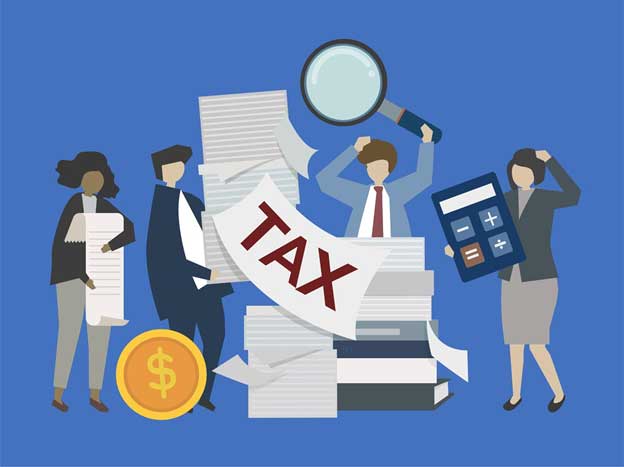Understanding HST in Canada: A Guide for Businesses
Allan Madan, CPA, CA

As a Canadian accountant, I often get asked about HST: what it is, how to register for it, and how businesses can manage it efficiently. Whether you’re a small business owner just starting out or a seasoned entrepreneur, understanding HST is crucial to keeping your business compliant and optimizing your tax strategy.

What is HST?
HST stands for Harmonized Sales Tax, which combines the federal Goods and Services Tax (GST) with the provincial sales tax (PST) in provinces that have chosen to harmonize their taxes. These provinces currently include Ontario, New Brunswick, Nova Scotia, Newfoundland and Labrador, and Prince Edward Island.
For example, in Ontario, the HST rate is 13%, which includes 5% federal GST and 8% provincial portion. That means if you sell a service for $100, the customer actually pays $113, and your business must remit the $13 to the CRA, while keeping proper records to offset HST paid on business expenses.
Not all provinces have HST. For example, in British Columbia, you collect GST (5%) and PST (7%) separately. This distinction is important if you sell products or services across provincial borders.
How to Get an HST Number
Before you can legally charge HST, your business must register with the CRA and obtain a business number (BN). Here’s how the process works:
Step 1: Determine if registration is required
If your business earns more than $30,000 in revenue over the past four consecutive calendar quarters, registration is mandatory. Below that threshold, registration is optional, but voluntary registration can be beneficial. For example: Jane runs a small catering business in Nova Scotia. Last year, she earned $25,000. While she isn’t required to register for HST, she decides to do so to claim ITCs for the kitchen equipment she purchased.
Step 2: Register online, by phone, or by mail
The CRA provides multiple ways to register. Most businesses do this online for convenience. You’ll receive a 15-character business number, which you’ll use for all HST-related transactions.
Step 3: Start charging HST
Once registered, you can legally charge HST on your goods and services and begin claiming input tax credits on your purchases.
Developing a Smart HST Strategy
HST isn’t just about compliance—it’s an opportunity to manage cash flow and reduce your overall tax burden. Here are some strategies that make a real difference:
1. Track Input Tax Credits (ITCs) Carefully
Input tax credits allow businesses to recover HST paid on business expenses. This is particularly valuable for startups or businesses with high operating costs.
Example: Mark runs a construction company in Ontario. Last month, he bought $5,000 in tools and materials. He paid $650 HST on these purchases. By claiming ITCs, he can reduce the HST he remits to the CRA by that amount, effectively lowering his net tax liability.
2. Timing Your Invoicing and Remittances
The timing of invoices and HST remittances can impact cash flow. Under certain reporting periods, businesses remit HST monthly, quarterly, or annually. Understanding which method suits your cash flow is key.
Example: Sarah owns a small marketing firm. She opts for quarterly HST reporting instead of monthly because most clients pay late. This helps her avoid remitting tax she hasn’t yet collected, easing cash flow stress.
3. Choose the Right Accounting Method
Small businesses can choose cash or accrual accounting for HST reporting:
- Cash method: Remit HST only when payment is received. Ideal for businesses with delayed payments.
- Accrual method: Remit HST when invoices are issued, regardless of when payment is received.
4. Consider Provincial Differences
If your business sells across multiple provinces, you must understand provincial HST and GST rules. Mischarging HST can lead to penalties.
For example, let’s say a Toronto-based online retailer ships goods to both Ontario and Quebec. Ontario customers pay 13% HST, but Quebec customers pay 5% GST + 9.975% QST. Accurate billing prevents compliance issues.
5. Review Regularly with Your Accountant
HST rules change, and your business circumstances evolve. Regular review ensures you’re claiming all eligible ITCs, using the right accounting method, and avoiding overpayment or penalties.
For example, let’s say a tech startup initially registered for voluntary HST. After crossing the $30,000 threshold, the owner reviewed strategies with an accountant and implemented quarterly remittance and optimized ITCs, saving thousands annually.
Conclusion
HST is a fundamental part of doing business in Canada. By understanding what it is, registering correctly, and developing a thoughtful strategy, you can not only stay compliant but also optimize your cash flow and reduce your overall tax burden.
Whether you’re a small business owner just starting out or an established entrepreneur expanding across provinces, consulting with a knowledgeable accountant ensures your HST practices are efficient, accurate, and tailored to your business goals.
Disclaimer
The information provided on this page is intended to provide general information. The information does not take into account your personal situation and is not intended to be used without consultation from accounting and financial professionals. Allan Madan and Madan Chartered Accountant will not be held liable for any problems that arise from the usage of the information provided on this page.



